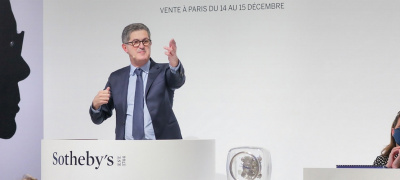
- Home
- >
- Auction House
Auction House
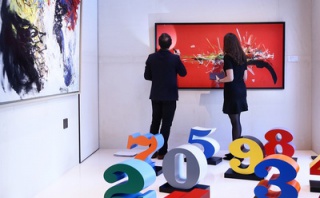
Sotheby's - An extraordinary History
On March 11, 1744, Samuel Baker, founder of Sotheby's, held the first-ever sale under his own name. The library of a certain Rt. Hon. Sir John Stanley, Bart. described as "containing several Hundred scarce and valuable books in all branches of Polite Literature" sold for a few hundred pounds. Modest though Samuel Baker's first sale might seem today, he was not without connections - or ambitions. Indeed, he and his successors were to handle, with great panache and showmanship, many of the great libraries sold at auction. On Napoleon's death, the books the French Emperor had taken with him into exile on St. Helena were sent to Sotheby's for sale. Additionally, libraries from Prince Talleyrand, John Willkes, Benjamin Heywood Bright, the Marquis of Lansdowne, and the Dukes of Devonshire and Buckingham were all sold through Samuel Baker's auctions.
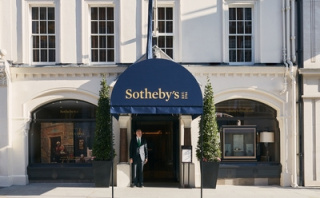
Sotheby's in New Bond Street
By the end of the First World War, the firm had so successfully expanded its role in the art market that new premises were required. In 1917, Sotheby's moved from its Wellington Street location to its famous New Bond Street saleroom, which has remained its London base ever since.
Arrival in fashionable New Bond Street also heralded a new era during which the turnover for paintings and other works of art finally began to outstrip books and literary property. This move towards a wider sales arena was a very deliberate one, and the charge was led in the area of Old Master Paintings and Drawings.
This diversification effort paved the way for the explosive growth of the firm under the leadership of Peter Wilson.
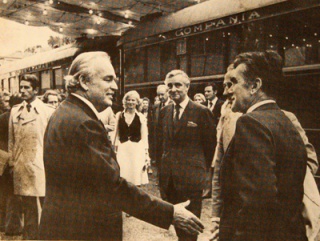
The era Peter Wilson
Wilson, who joined the firm in 1936, took Sotheby's onto the global stage. He ensured the firm's readiness to capitalize on the meteoric rise in popularity of Impressionist and Modern paintings. Perhaps the single most sensational and ultimately influential sale during Wilson's tenure was the famous Goldschmidt sale of 1958.
The Goldschmidt collection comprised seven of the most exquisite Impressionist and Modern paintings ever to come to auction. An evening auction was decided upon - the first at Sotheby's since the 18th century - and those attending were to wear evening dress. Fourteen hundred did attend; including Somerset Maugham, Anthony Quinn, Kirk Douglas, and Lady Churchill as well as hundreds of art dealers from all over the world. The seven pictures were all sold in just 21 minutes. They fetched £.781,000, the highest total ever reached at that time at a fine art sale.
Cezanne's “Garçon au Gilet Rouge” was sold to Paul Mellon for £.220,000, more than five times the previous record for a painting at auction. It was one of the social highlights of the year, and possibly the most exciting art auction of the century.
Largely thanks to the vision of Peter Wilson, Sotheby's recognized long before its rivals that art was becoming an international market. It was because of this that the company opened an office in New York in 1955; and, more importantly, acquired Parke-Bernet in 1964. Parke-Bernet was the United State's largest fine art auction house, and following its acquisition by Sotheby's, became crucially involved in the rapidly developing North American market for Impressionist and Modern paintings. Parke-Bernet, and its President Louis Marion, had a distinguished history of selling major collections at record prices. The most dramatic moment for the firm came in 1961, when Marion oversaw the sale of Rembrandt's Aristotle Contemplating the Bust of Homer to The Metropolitan Museum of Art for a record $2,300,000. That record stood for 18 years, until it was broken in a Sotheby's sale by another Marion - his son John, who later became the firm's Chairman.
With the greatest American auction house now a part of Sotheby's, the company looked elsewhere for further opportunities. In 1967, offices opened in Paris, Los Angeles and Houston. In 1968 it was Melbourne, Florence and Toronto. In 1969, Zurich, Munich and Edinburgh joined the list. Expansion continued throughout the 1970s, with offices opening across much of Europe, a provincial network in Britain, offices in Asia as well as numerous new addresses across the United States. Along with many other businesses at the time, Sotheby's chose this period of rapid growth to "go public." The share issue in 1977 was oversubscribed 26 times, and within 18 months the value of a share had more than doubled.
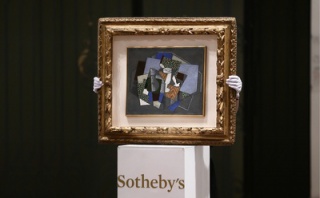
The past 40 years
The early 1980s, a period of market and corporate uncertainty, was followed in 1983 by the acquisition of Sotheby's by businessman A. Alfred Taubman and a small group of investors. Led by Michael Ainslie, Sotheby's once again became a private company. At the same time, the art market was revitalized by several important sales that set the stage for the series of auctions at Sotheby's which have entered the history books for their drama, their prices and for the way they captured the public's imagination.
One of the most stunning auctions, held on the shores of Lake Geneva in 1987, was the sale of the jewels of the Duchess of Windsor. In an intensely competitive environment, bids via satellite from New York vied with bids from a celebrity audience and from phone buyers around the world. Over $50,000,000 was raised during the course of the sale - more than five times Sotheby's highest expectations. Anything seemed possible in the late 1980s. In 1989, for example, the firm sold Impressionist and Modern art totaling a staggering $1.1 billion in New York and London. Indeed, by the end of the decade, prices had risen to such levels that auctions attracted global media attention on an unprecedented scale. With these successes in hand, the company went public for the second time in 1988. As the 1990s began, the all-embracing chill of a global recession made its mark on the art market just as emphatically as it did on so many other markets. With the perspective that 250 years of history provides, though, Sotheby's has learned to manage these art cycles and has seen recovery follow recession a number of times.
In fact, Sotheby's grew considerably in the subsequent decade. Both of the firm's main locations, London and New York, undertook extensive expansions and renovations in the 1990s. In London in 2001, Sotheby's opened premises at Olympia to complement sales at the firm's New Bond Street headquarters, almost doubling Sotheby's gallery space in London. State-of-the-art features and technology provide the most professional and comprehensive level of client service of any UK saleroom. Sotheby's New York also underwent an exciting expansion project. Completed in the spring of 2000, the firm added six additional floors to the York Avenue headquarters, allowing Sotheby's to consolidate New York office and warehouse space and provide specialist departments with their own exhibition spaces. The finished result is highlighted by a tenth-floor gallery that has been called "one of the great dramatic exhibition spaces of New York...an environment to rival almost any of the city's museums."
In 2000, Sotheby's became the first international art auction house to hold auctions on the Internet. Sothebys.com was the venue for some dramatic and unprecedented successes, such as the sale of a first printing of the Declaration of Independence for more than $8 million, 21 panels of the historic Boston Garden floor, and a masterwork by Frederick, Lord Leighton. In addition, Sotheby's opened its traditional saleroom auctions to Internet bidding through the eBay Live Auctions service. Although no longer an auction venue, Sotheby's website remains a vital tool for the dissemination of information and news about the auction house worldwide, and select sales are open for bids via the Internet. Whether expanding infrastructure or exploring cyberspace, Sotheby's continues to demonstrate innovation and responsiveness to the needs of our ever-expanding international clientele. As clients' needs and collecting tastes evolve, Sotheby's flexibility and unwavering focus on expertise and client service will remain our hallmarks into the 21st century.





